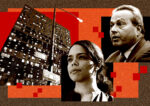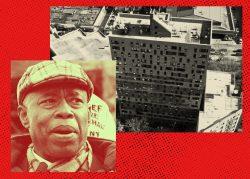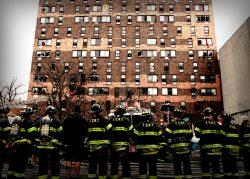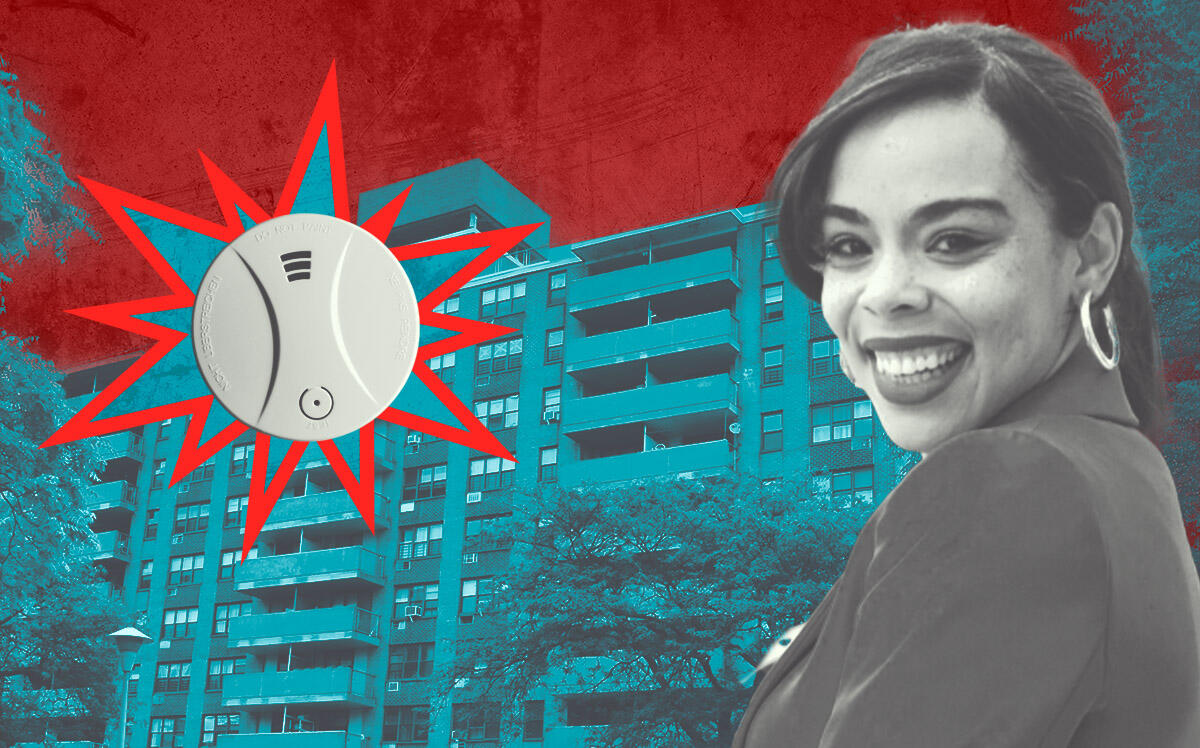A year after an electric space heater ignited a blaze that killed 17 people in a Bronx apartment building, the New York City Council is considering a bill mandating heat sensors in buildings whose residents complain of low temperatures.
The proposal, intended to prevent fires like the one at the Twin Parks North West complex in Fordham Heights, would fine landlords up to $1,000 for each day a building’s temperature failed to hit the city-mandated 68-degree minimum during winter.
But tenants at Stratford Towers in Soundview, another Bronx building owned by Twin Parks landlord Camber Property Group, don’t believe the measure would make much of a difference. Heat sensors are already installed in their building, they say, and they fail to capture how cold it truly is.
On the anniversary of the Twin Parks tragedy this week, Shanita Lawrence, a decades-long resident of Stratford Tower and president of its tenant association, emailed the building’s site manager, an employee of Wavecrest Management, to describe the extent of the problem.
“Outdoor temperatures have been in the 30’s and low 40’s yet the radiator makes noise but produces no heat,” Lawrence wrote in the latest of “countless” emails she said she’s sent to management over the years.
“Tenants continue to have to run their space heaters 24 hours a day,” she wrote in another email days earlier.
Asked about Lawrence’s concerns last month, a Wavecrest spokesperson said temperatures in the building had averaged 73.4 degrees during the heating season. A Camber Property Group spokesperson, writing after City Council member Pierina Sanchez introduced the heat sensor bill, said the Twin Parks building had shown an average of 71.2 degrees the day before the fire.
Lawrence doesn’t dispute that. The week of Thanksgiving, she said, a thermostat next to the heat sensor in her unit registered 72 degrees.
“The number seems high enough, but it doesn’t feel like what I know it to feel,” Lawrence said. “So I knew something was wrong.”
Real feel
The discrepancy comes down to what meteorologists call apparent temperature, or what AccuWeather has branded “RealFeel.”
Like in the summer, when 80 percent humidity can make an 86-degree day feel like the thermometer has cracked 100, lower humidity in winter can make the cold feel more frigid.
A 2017 study of humidity levels in New York City apartments found that in a sample of 34 buildings, “there is relatively good management of indoor temperature during winter, but an absence of such management for indoor humidity.” Lower humidity levels were particularly associated with buildings containing more than 100 units. Stratford Towers has 129.
Lawrence said that after buying a more specialized thermostat, she found her apartment averages 30 percent humidity but has dropped as low as 10 percent.
At 30 percent humidity, 71 degrees feels like 67. At 10 percent humidity, it feels like 64.
On Monday, the temperature in Lawrence’s apartment had fallen below 68 degrees for the fourth time that heating season, she said.
At 10 percent humidity, it would have felt colder than 62 degrees.
Tack on the wind chill from what Stratford Towers tenants claim is a near-constant draft and a unit’s so-called apparent temperature drops further.
For residents, that means wearing coats and hats indoors or exposing themselves to the fire hazards of ever-running space heaters or ovens.
City records show that tenants have lodged “no heat” complaints almost daily in the building between last January and early March, and from late November through the present.
“Even at 71 degrees, I typically have one heater on in the apartment because it’s just too cold for us to bear,” said Nakeba Brown, a vice president of the Stratford Towers tenant association who lives in the complex with her daughter.
At a December hearing on the heat sensor bill, the city’s Department of Housing Preservation and Development said that a pilot version of the program, which outfitted 50 buildings with heat sensors, has too small of a sample size to assess its impact and that enforcing compliance has been difficult.
“We did see an improvement in buildings where the sensors were installed, but we also saw improvement in those buildings where no heat sensor was installed,” said AnnMarie Santiago, HPD’s deputy commissioner of enforcement.
The Rent Stabilization Association, a landlord group, took that as “no clear evidence” that the program would make a difference.
If approved by the City Council, the expanded program would see heat sensors installed in 750 buildings with a disproportionate number of temperature violations and heat complaints, or 150 in each borough.
A representative for Camber and Wavecrest said the heat levels at Stratford Towers “exceed all HPD requirements and the building has no violations for heat.”
“We take all complaints we receive seriously and are always working to provide our residents with the best experience possible,” the spokesperson said.
Read more



